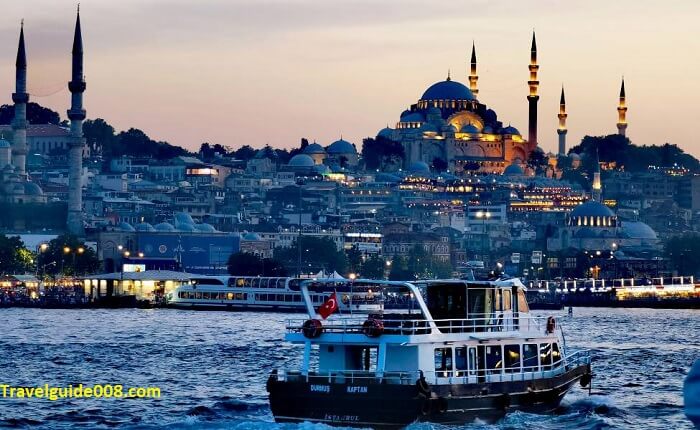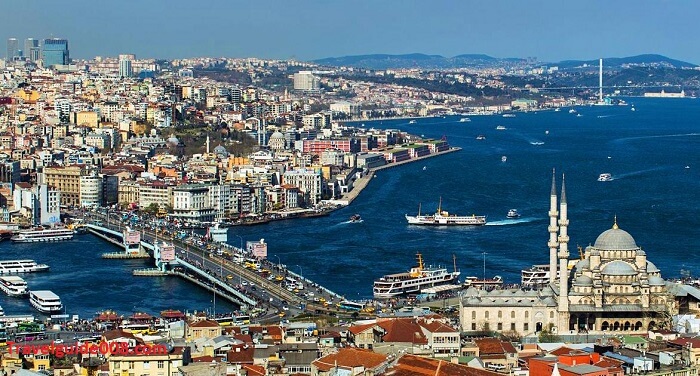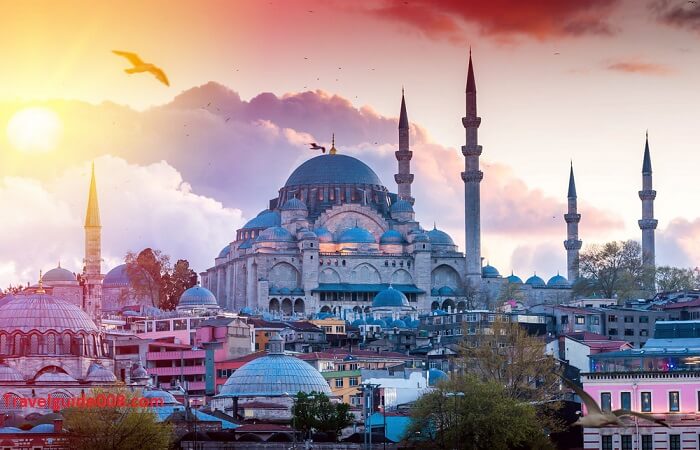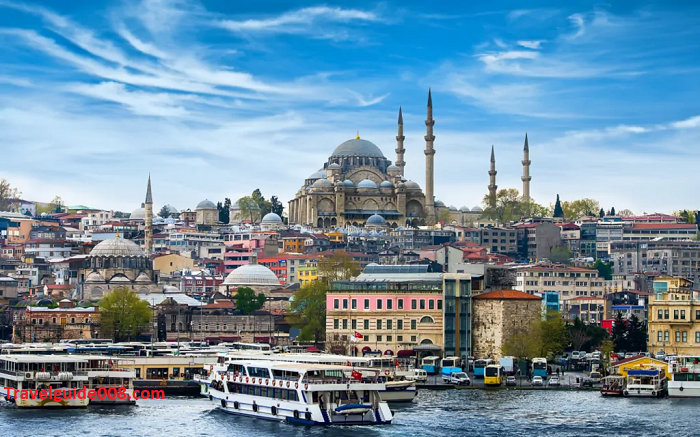Istanbul Travel Guide Comprehensive Map of Turkey’s Cultural
is one of the world’s most seductive and richly historical locations, where East meets West. You will find that ancient tradition blends with modern vibrancy as you discover experiences unseen elsewhere. History buffs, foodies, or shopaholics, welcome. This Istanbul travel guide helps guide you through the city’s main attractions, neighbourhoods, and hidden gems with a full map of where to go and what to see.
Why Visit Istanbul?
Istanbul Travel
Istanbul was the capital of empires—the Byzantine and Roman empires—that left behind monumental structures, art, and cultural heritage. A short stretch of its geography sits on two continents: Europe and Asia, giving an interesting aspect to the synthesis of a city’s culture and architecture. From its beautiful mosques to its livening bazaars and picturesque waterfronts to neighbourhoods that are just curiously eclectic, Istanbul is a city that fascinates and surprises at every turn.
Here’s a broad Istanbul travel guide, broken up into key areas and major sights that you shouldn’t miss:

1. Sultanahmet: The Historic Heart of Istanbul
Sultanahmet is often called the Old City. It is the heart and soul of Istanbul’s culture and history. Of course, this district hosts some of the most fantastic sights in the city, many of them dating from the Byzantine and Ottoman periods.
Key sights in Sultanahmet:
- Hagia Sophia (Ayasofya): Hagia Sophia is one of the original cathedrals, built by Emperor Justinian in the 6th century. Hagia Sophia was a mosque and is now a mosque-museum. It is one of the landmarks of Istanbul, bringing magnificent massiveness along with stunning mosaics.
- Blue Mosque (Sultan Ahmet Camii): Standing opposite Hagia Sophia, the Blue Mosque features a stunning interior with blue-tiled ornamentation and its six minarets. It is still an operating mosque but opens to visitors outside of prayer times.
- The Topkapi Palace is the oldest and largest of the former residences of Ottoman sultans, encompassing a treasure trove of art, history, and culture. Its courts, gardens, and rooms abound with irreplaceable treasures: the famous Topkapi Dagger and the cloak of Prophet Muhammad.
- Basilica Cistern: This underground reservoir built by Emperor Justinian just a short walk from Hagia Sophia is an atmospheric and surreal experience. The softly lit columns give an eerie yet enchanting impression.
- Hippodrome: Now a public square, the once chariot racing and political events site during Byzantium contains some remaining remnants like the Egyptian Obelisk and the Serpent Column.
- Useful information on Sultanahmet: Most of these attractions are within walking distance from one another, making it very easy to wander on foot.
The district is quite crowded, and most so during the peak tourist season. Consider coming in the early morning.
Dress modestly when visiting mosques and cover your head if you’re a woman.
2. Beyoglu: The Modern Face of Istanbul
If Sultanahmet represents Istanbul’s past, then Beyoğlu represents its present and future. Located on the European side of the city, Beyoğlu is known for its lively streets, cheerful cafes, and booming artistic scene. The area around Taksim Square is the commercial centre of the city. It contrasts with the ancient districts in all aspects.
- Istiklal Street: One of the city’s most famous streets, Istiklal is lined with history, trendy boutiques, restaurants, and cultural institutions. Take a ride on the red, nostalgic tram along the pedestrianised avenue.
- Galata Tower: Galata Tower is one of the city’s oldest and most recognised landmarks. It offers a panoramic view from the top—360 degrees of the Bosphorus, Golden Horn, and Old City skyline.
- Pera Museum: For all art enthusiasts, Pera Museum keeps Ottoman-era paintings, Orientalist art, and contemporary pieces.
It is like a bohemian neighbourhood, with cafes, galleries, and second-hand bookshops. There, you will find an amazing place to explore if you want to feel the Istanbul creative movement that is happening today.

Helpful to Know:
Istiklal Street is very crowded, especially on weekends. Try to wander around the side streets for a more peaceful exploration.
Nightlife is thriving in Beyoğlu, with bars, clubs, and live music places on the rampage. Try some raki, Turkey’s traditional aniseed-flavoured liquor.
3. Bosphorus: The Straits of Istanbul:
The Bosphorus Strait is one of Istanbul’s most beautiful and distinctive experiences: a natural waterway separating Europe and Asia. A cruise along the Bosphorus is one of the best ways to see the skyline of the city; the journey passes by historic mansions, palaces, and bridges.
The Key Sights Along the Bosphorus:
- Dolmabahçe Palace: A lavish palace that amalgamates Ottoman, Baroque, and Rococo styles, Dolmabahçe Palace was the administrative centre of the Ottoman Empire in the late 19th century. Crystal chandeliers, marble halls, and fantastic views of the waterfront characterise this palace.
- Bosphorus Bridge: The bridge links the European and Asian sides of Istanbul, one of the city’s most symbolic references to its unique position between two continents.
- Ortaköy: A small village by the Bosphorus, Ortaköy is characterised by its bustling street market, cafes, and views of the Bosphorus Bridge. Don’t miss having a kumpir—a baked potato stuffed with choice fillings—from one of the street vendors.
- Rumeli Fort: Built by the Ottomans in the 15th century to control the Bosphorus, this fortress offers spectacular views of the waterway.
- Maiden’s Tower (Kız Kulesi): Right at the entrance to the Bosphorus, on a tiny island, stands Maiden’s Tower—a terrific place for a romantic meal; it has a restaurant and a museum.
Tips for Visiting the Bosphorus:
A cruise on the Bosphorus is also an excellent way of seeing the city from a new perspective. There are two varieties available: you can opt for a short excursion or a much longer one that goes as far as the Black Sea.
For something a little different, take the ferry across the Bosphorus and pop over to Istanbul’s Asian side.
4. Kadıköy: Istanbul’s Asian Side
Istanbul’s Asian side sees few Western visitors, but there’s actually quite a lot on offer. Bustling district Kadıköy, on Istanbul’s Asian shore, delivers a proper Turkish experience: bustling market streets, hip cafes, and restaurants to die for.
Key Highlights in Kadıköy:
- Kadıköy Market: colourful and lively with fresh fruit and vegetables, fresh seafood, spices, and local cuisine. This is a good place to explore everyday life among the locals.
- Moda: a quiet and tree-lined district famous for its cafes, restaurants, and even views of the Marmara Sea. It is great for a stroll or watching the sunset while having a picnic there.
- Çamlıca Hill: It’s one of the highest points on the Asian side, but it’s also a great place to get panoramic views of the whole city.
Tips for Visiting Kadıköy:
The Asian side of Istanbul is much less touristy than the European side of Istanbul, so you’ll find more authentic and local experiences.
The ferry ride from Kadıköy to Eminönü is the beautiful way to see the city and the Bosphorus from the water.

5. Everyday Life Tips on Getting Around Istanbul Transport:
- Public Transport: The public transport system in Istanbul encompasses a few different forms, including trams, buses, ferries, and the metro. The Istanbulkart is a rechargeable smart card that can be used on all forms of transport and is pretty much the only way to get around the city effectively.
- Walking: Most attractions in Istanbul are within walking distance, especially in Sultanahmet and Beyoğlu. Comfortable shoes should be brought since the streets here are a little hilly and cobblestone in certain parts.
- Ferries: Cross the Bosphorus by ferry to travel between the European and Asian sides of Istanbul. This is really an experience in itself and must be done by those interested.

Where to Stay:
Accommodations in Istanbul run the gamut from luxurious hotels and boutique stays to budget-friendly hostels. The popular places to stay are in Sultanahmet, where sites are more concentrated with historic interest; Beyoğlu, for all shopping and nightlife; and along the Bosphorus coastline for the views.

